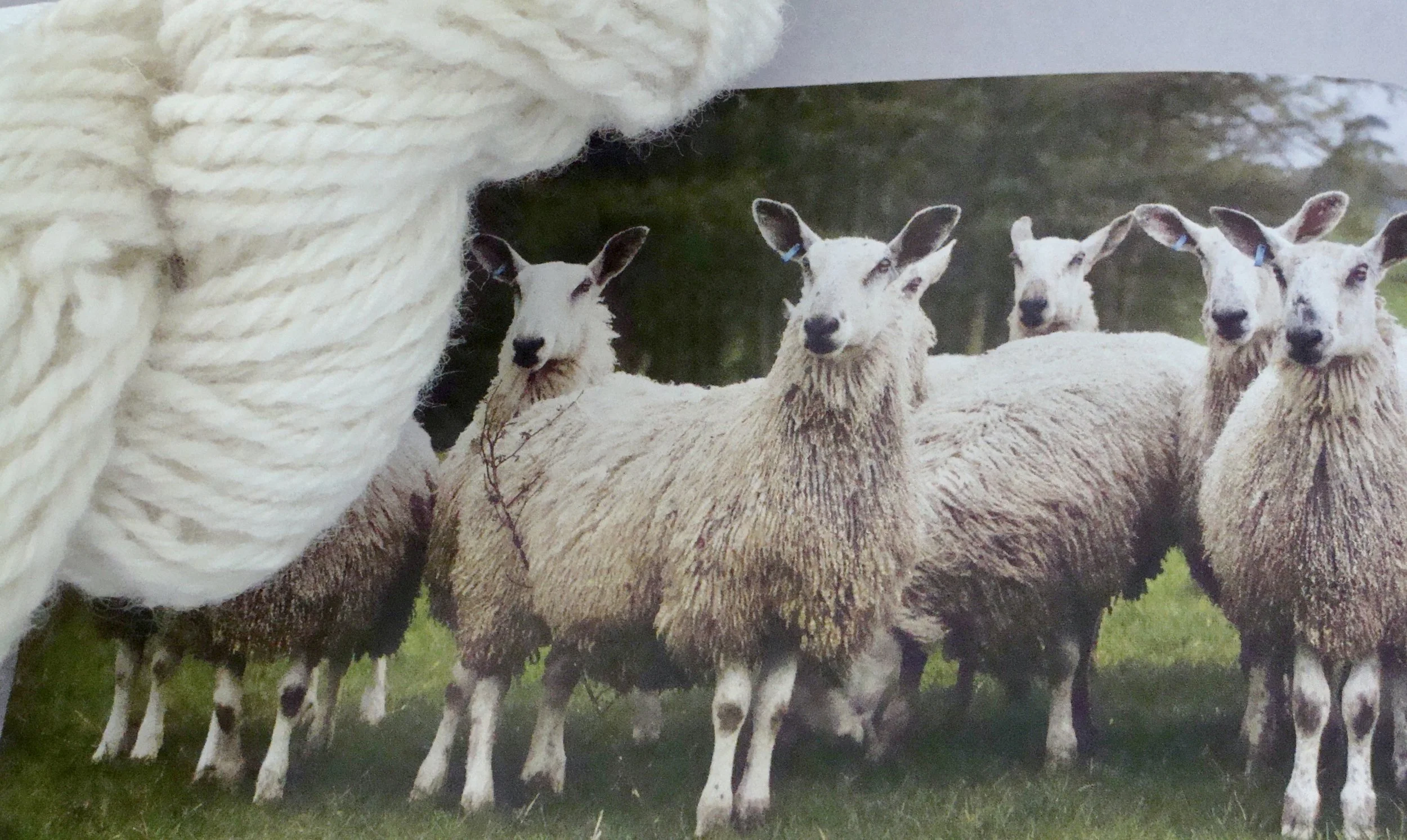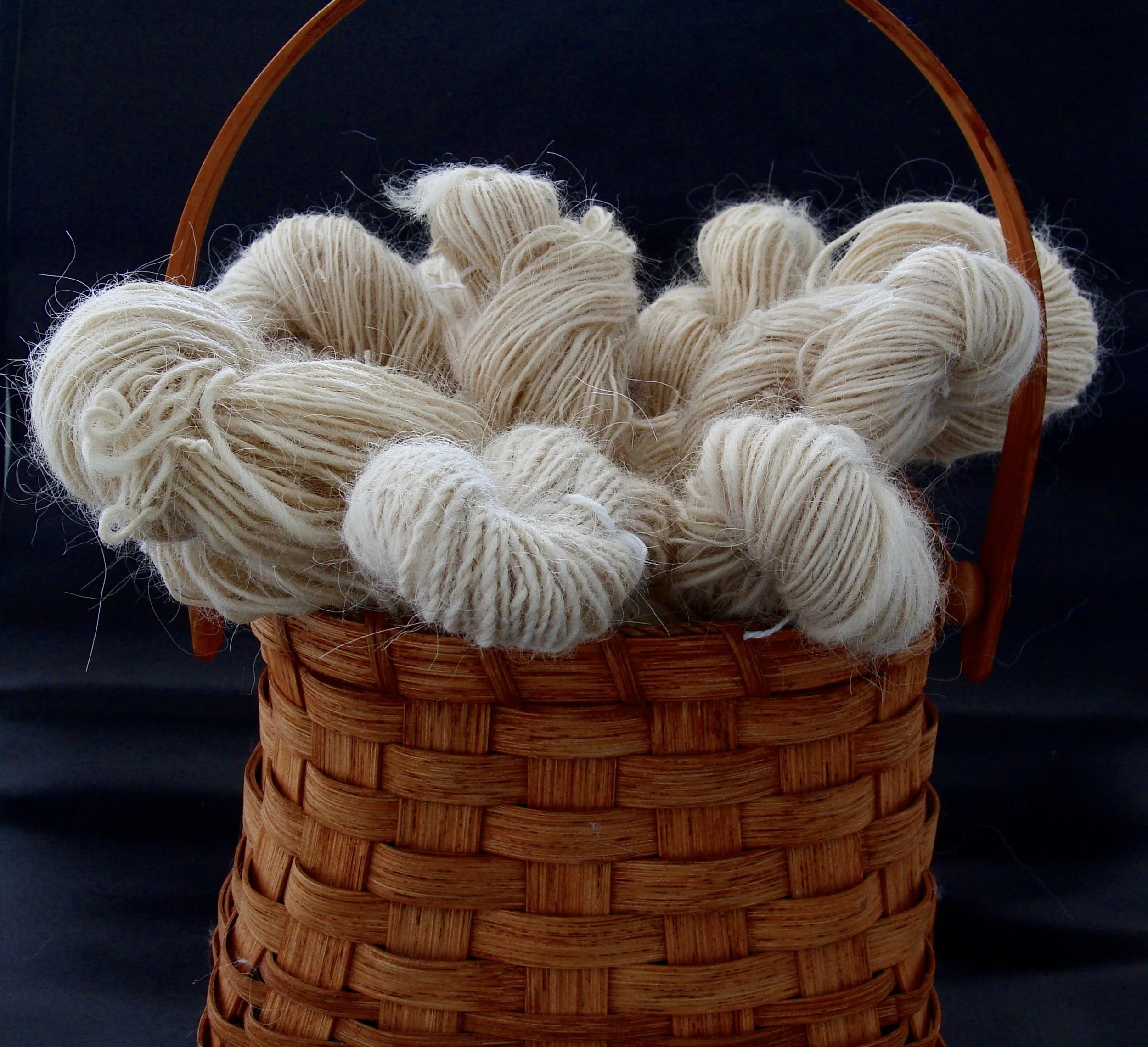Let's Spin . . . Cheviot
Cheviot sheep are an ancient breed that originated in the cold, wet, rugged Cheviot Hills on the border between Scotland and England. They were noted as early as 1372 and likely selected for monastery flocks due to their hardiness. Initially, they were called 'Long sheep' or 'White sheep' in contrast to the Scottish Blackface. Sir John Sinclair is credited with naming these hardy sheep he chose for his estate in Caithness, North Scotland.
Norway imported Cheviots in the 1860s and crossbred them with their native northern short-tail primitive sheep. Several modern Norwegian sheep breeds, including Dalasau, Rygia, and Steiger, result from this. As well, purebred Cheviots list among the "Norwegian" breeds. Cheviots were first imported to the United States from Scotland in 1838. Additionally, they are found in Canada, Australia, New Zealand (1845), and South Africa.
Cheviots are classified as mountain and hill sheep in the United Kingdom. There are several recognized breeds, including the North Country Cheviot or 'Northie' (Scottish Highlands), the South Country or Border Cheviot, and the Brecknock Hills Cheviot (Wales). Brecknock Hills Cheviots were developed in the 1800s in the Brecon Beacons hills of South Wales and are named for the county of Breconshire. Unlike most Cheviot breeds, their wool comes in a range of colors.
According to the American Cheviot Sheep Society, the modern American Classic Cheviot is a pure breed that has been produced by selection rather than by crossing. There is also an American Miniature Cheviot.
Cheviot_ewe_with_lamb.jpg: Donald Macleod from Stornoway, Scotlandderivative work: Coycan, CC BY 2.0 <https://creativecommons.org/licenses/by/2.0>, via Wikimedia Commons
Cheviots are small- to medium-size sheep with rams averaging 160 to 200 pounds and ewes 120 to 170 pounds. Cheviots have erect perky ears and Roman noses with clean or bare faces (no wool). They have short legs that are also free of wool. Most cheviots are polled (hornless).
Described as alert and very active sheep, they are often used in training border collies and other herding dogs.
I find them to be extremely cute!
Fleece Characteristics
Although Cheviot is not a true down breed, the fleece is described as down-like. True down breeds come from the Downs (Stonehenge area) in England and share similar fleece characteristics, including irregular crimp, matte appearance, loft, elasticity, and resistance to felting.
The fine-medium wool has a micron count of 27-33 with a helical crimp and a 4 to 5-inch staple length. A helical crimp is more of a 3D structure than other breeds' typical "crinkle fry" crimp. Cheviot fiber is springy, lofty, bouncy, and resilient. It is often blended with other wools to add resilience and durability.
Most Cheviot breeds have creamy white fleece. However, Brecknock Hills have a full range of natural colors. Some Miniature Cheviots are black or tan, or either of these colors toned down by white. There is also a "painted" Miniature Cheviot with patches of two or more colors.
The fleeces generally weigh in the 3 to 10-pound range. They are not overly greasy.
The fiber can range from next to skin soft to crisp. Many spinners recommend Cheviot as an excellent sock yarn, and many notes from spinners listed socks as their ultimate use of the yarn. Other uses include knitting or weaving mittens, hats, outerwear, and blankets. Cheviot was the traditional wool woven into Scottish tartans and tweeds.
Cheviot wool takes dye well and is said to be somewhat felt-resistant.
Preparation
Cheviot's staple length and springy quality lend well to hand carding and rolags. Some fleeces have longer staple lengths and could be combed. It can also be drum-carded. Some Cheviot fleeces contain considerable amounts of wiry, coarse kemp hairs that need to be removed.
The Cheviot fiber I spun was a commercial combed top. At around 5 inches, the fibers were at the long end of the range for Cheviot. It felt soft overall yet crisp in my hand as I was spinning it.
Spinning
In researching, most spinners recommended a short forward or short backward draw with a medium twist aiming for a light yarn with a nice bounce. Cheviot is also a candidate for woolen spinning, producing light and springy yarn.
My Experience
I drafted my fiber with a short forward draw with a 7.5:1 drive ratio. I plied using a 6.2:1 ratio (4 treadles). Above is the 2-ply yarn prior to wet-finishing.
The finished yarn (above) is lofty, springy, and softer than I expected. It fluffed up a lot in the finishing. Like many spinners, I noted that Cheviot is easy to spin. It is one of my favorite fibers I have spun so far.
I started with just one ounce of fiber for a sample spin. The finished 2-ply yarn is .95 ounces/74 yards. It is closest to a worsted weight with a wraps per inch (wpi) of 9 and grist of 1246 yd/pound.
For some time, I've wanted to start a breed study that explores various wool, hair, and other fibers and compares their characteristics and the qualities of the finished yarns. I've done some of this in the past (see prior posts on Romney, Coopworth, Jacob, Blue Faced Leicester, Lincoln, and Alpaca). However, I want to expand my study and record my findings more systematically, including a simple knitted sample swatch* and keeping a breed record sheet.
Lots of spinners have developed record sheets and generously shared their ideas. I've collated them and created a record that works for me. Click here to see a PDF of my sheet. On the front is the information for this breed study spin with a place along the side where I'll punch holes and insert samples of the raw fiber, singles, finished yarn, etc. On the back is a synopsis of the breed. I placed the sheet in a sheet protector and a 3-ring binder. I have started revisiting the breeds I've spun and will update those posts with the information. And, I have LOTS more to study and spin!!!
*My swatch is an idea I saw published by Deb Robson. The swatch is mostly stockinette with a 3-row moss stitch border. Deb's swatches are about 4 inches square. Mine is closer to 5 1/2" square. I used US size 7 knitting needles and cast on 25 stitches.
Resources
52 Weeks of Sheep Facebook Group. https://www.facebook.com/groups/52weeksofsheep
American Cheviot Sheep Society. http://www.cheviots.org
North Country Cheviot Sheep. https://www.northcountrycheviot.com
Caldwell, M., Cheviot: Revisiting a Heritage Breed for Socks. Ply. Autumn 2020, 46-47.
Cheviot Sheep Society. https://cheviotsheep.org
Faulkner, J.B., 51 Yarns to Spin Before You Cast Off (2018). 4.Down Wool, p 10-11.
New Zealand Rare Breeds. https://www.rarebreeds.co.nz/cheviot
Oklahoma State University, Department of Animal Science, Breeds of Livestock-Cheviot Sheep. http://afs.okstate.edu/breeds/sheep/cheviot
Rhoades, C. H., Cheviot; Spin-Off, Winter 2006, 78-83.
Rhoades, C. H., Cheviot Mittens: Spin-Off, Winter 2006, 84-86.
Robson, D. and Ekarius, C., The Fleece & Fiber Sourcebook. (2011)
















